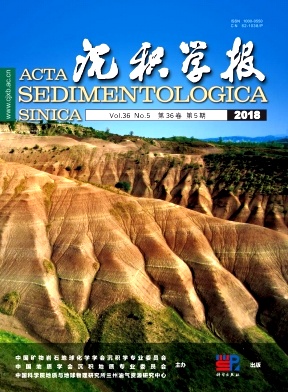Developing Pattern and Distribution Features of Biological Limestone in First Member of Shahejie Formation in Changdi area, Zhanhua Depression, Bohai Bay Basin, China
doi: 10.14027/j.issn.1000-0550.2018.070
- Received Date: 2017-08-08
- Rev Recd Date: 2017-10-26
- Publish Date: 2018-10-10
-
Key words:
- Changdi area /
- the First Member of Shahejie Formation /
- biological limestone /
- organic bank /
- developmental pattern
Abstract: High production of oils and gases from the biological limestone at the first member bottom of the Shahejie Formation in Changdi area, Zhanhua sag lead to extremely frequent exploration activities in recent years, which used to be weak in petroleum exploration. Due to a relative low exploration in the whole first member of the Shahejie Formation, the development pattern and distribution features of limestone has not been entirely understood yet. Based on cores, well logs and high-resolution 3-D seismic data, many aspects of the biological limestone have been studied systematically in this paper and several results are summarized as the followings: Firstly, with help of seismic and wellbore data, the first member of the Shahejie Formation is considered as one third-level sequence by the previous method of sequences division, the bottom of which could also be divided into three fourth-level sequences depending on high frequency sequence division theory and the biological limestone developed in this part. Secondly, the distribution of organic bank is controlled by paleoclimate, the relative paleo-water depth and paleogeomorphology, the first member of the Shahejie Formation in the study area existed in subtropical brackish lake environment under a humid-arid climate, and the organic bank was mainly developed in the regressive systems tracting high-energy turbulent lake with a stably declining paleo-water depth. The logging data also confirmed the biological limestone are located in the southwest gentle slope and east depression. Thirdly, the development patterns of the organic bank are established and further divided into gentle-slope and depression patterns. The stratigraphic evolution pattern of the biological limestone is determined for three sets of limestone developed and retrograde to the north. Fourthly, by analyzing vertical and horizontal distribution of biological limestone in each fourth-level sequence, the prediction of horizontal distribution of sensitive seismic attributes and paleogeomorphology, the thickness of the biological limestone is small in north but big in south with a strip-like distribution. Finally, this study determines the distribution and development patterns of the limestone in the lower part of the first member of Shahejie Formation, which deepens the theoretical study on the developing pattern of lake-type biological limestone, and guides the development of lithological reservoir and traps optimization of the first member of Shahejie Formation, Jiyang depression.
| Citation: | SHEN PeiYang, LIU Zhen, LIU ShiMin, MA LiChi, SUN Chao, LI ZiYuan, YANG XiaoGuang, LU ChaoJin. Developing Pattern and Distribution Features of Biological Limestone in First Member of Shahejie Formation in Changdi area, Zhanhua Depression, Bohai Bay Basin, China[J]. Acta Sedimentologica Sinica, 2018, 36(5): 995-1007. doi: 10.14027/j.issn.1000-0550.2018.070 |






 DownLoad:
DownLoad: